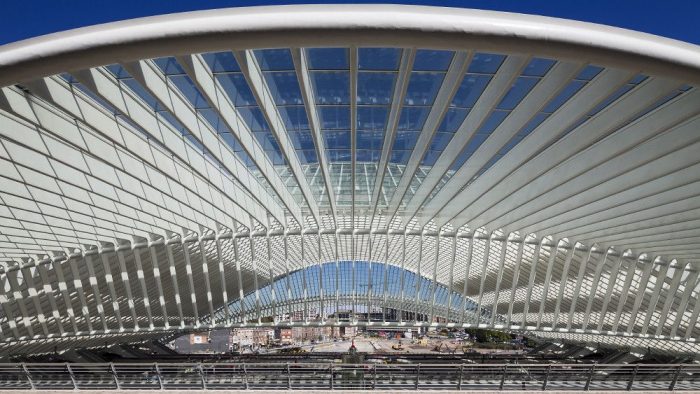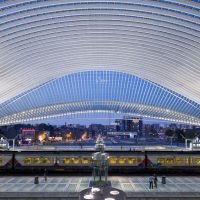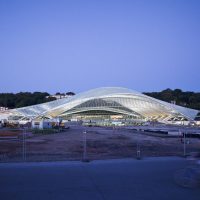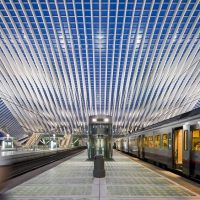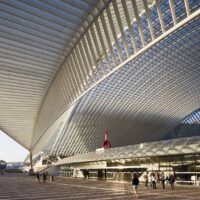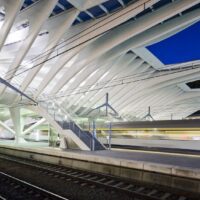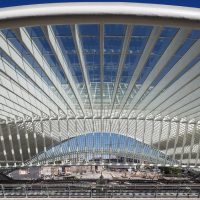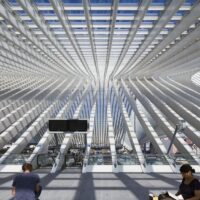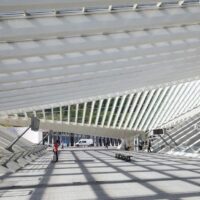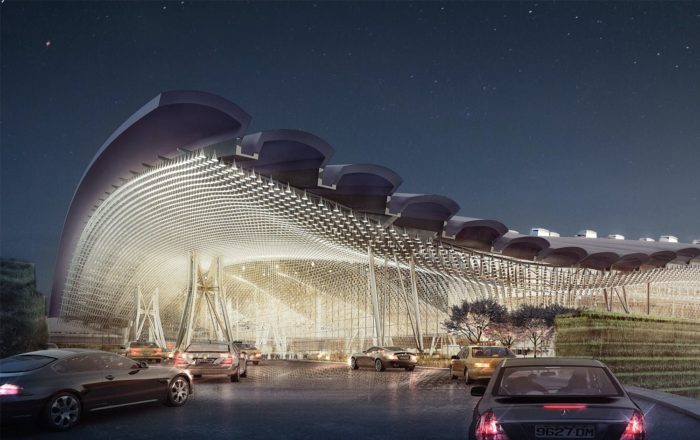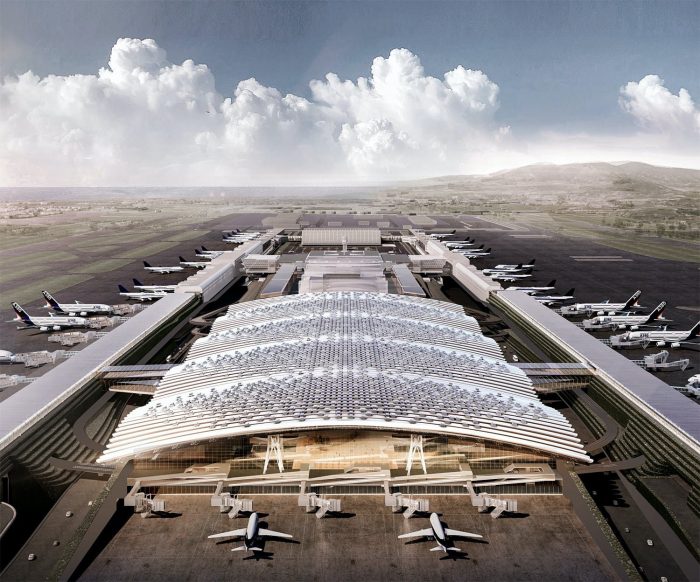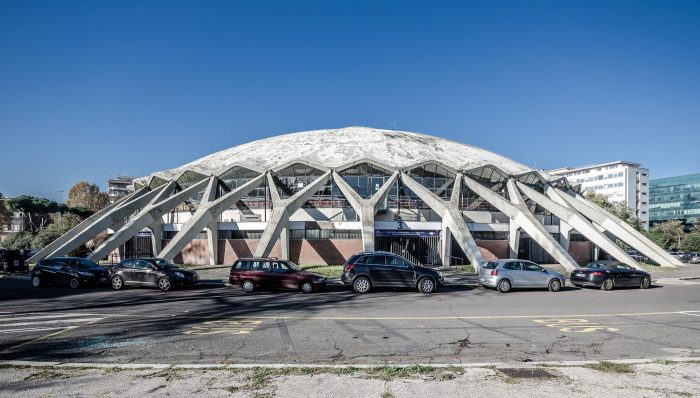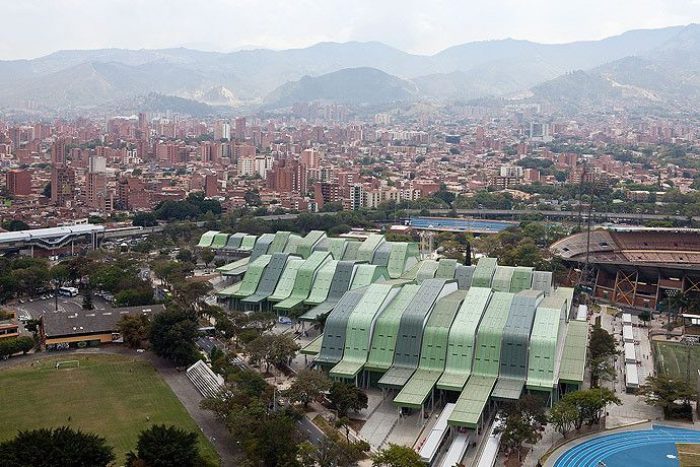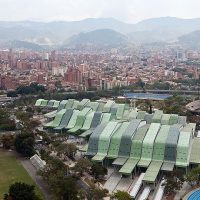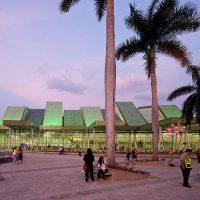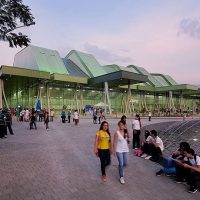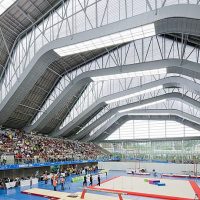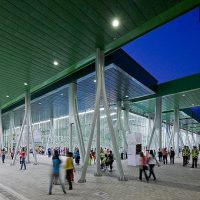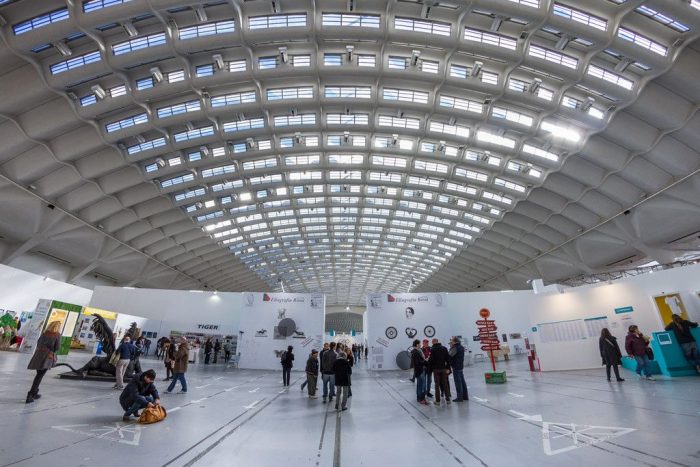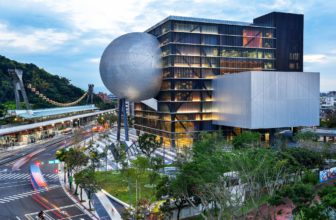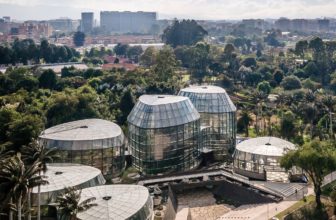Architects sometimes feel restricted when designing spaces with long-span structures. Generally, the maximum span for beams in building construction depends on the beams’ material compositions along with their vertical and horizontal thicknesses. Generally, the longer the depth of the beam, the higher possibility to have a longer span. This consequently makes many architects feel restricted in their designs and unable to let out their creativity. Yet, Architectural Structures Shape The Buildings’ Elegance and Aesthetics when given time and effort.
What is a long span?
What we consider long span structures are structures with spans larger than 20 meters. The most common types of long-span structures are trusses, folded plates, shell structures, frames, and tent structures or tensile structures. Also, another alternative for large-span structures is the diagrid systems commonly used in high-rise buildings. Here, we showcase 5 projects with long-span structures where architects did not sacrifice their clear and spacious halls.
Here is a list of 5 projects with long span structures
1-Liège-Guillemins TGV Railway Station by Santiago Calatrava
In the historical city of Liège, Belgium, the renowned Spanish architect Santiago Calatrava designed a high-speed train station. The steel structure of the station manifests rhythm, transparency, and movement. The steel and the glass create a vaulted shading canopy, allowing for a great deal of natural light.
Glazed balustrades and stainless steel complement the station’s structure to generate a unique form. People have described it as brave, dreamlike, and innovative. This massive structure is 590 ft in span and the structural elements are all made of steel and glass, in addition to concrete cast on-site. Calatrava used concrete to its full potential, in this project. In fact, the European Concrete Societies Network (ECSN) selected the building as a winner of the 2006 Award for Excellence, acknowledging its unique use of concrete.
- Liège-Guillemins Railway Station
- Photography by © Yannick Wegner
- Photography by © Yannick Wegner
- Photography by © Yannick Wegner
- Photography by © Yannick Wegner
- Photography by © Yannick Wegner
- Photography by © Yannick Wegner
- Photography by © Yannick Wegner
2. Taoyuan International Airport by ARUP
Taoyuan International Airport is the largest in Taiwan and the eleventh busiest airport in the world. Due to the increasing numbers of passengers, Taiwan has introduced many expansion projects to the airport, one of which is Terminal 3. Rogers Stirk Harbour + Partners have won a competition to design the terminal in collaboration with ARUP Group who is considerably experienced in airport design.
The structure is designed to reflect the unique surrounding landscape of the city. A series of four-legged towers support the massive shell roof. Here, the roof span is 80 meters long and the project covers an area of 640,000 m.sq. Although the roof is hard, the ceiling takes the form of a soft ductile surface that encloses the different functions taking place inside the building.
Additionally, ARUP achieved significant savings in the cost of fire protection in this structure, while at the same time achieving the client’s aesthetic requirements.
3. Palazzetto Dello Sport in Rome by Pier Luigi Nervi
When it comes to long-span architecture, sometimes old is gold. Italian engineer and architect Pier Luigi Nerviwell— known for his innovative and bold structures, designed many sports facilities, and had his own construction philosophy. One of his remarkable works is the Palazzetto Dello Sport indoor arena in Rome.
Although it was built in 1957, the Palazzetto Dello Sport indoor arena is considered huge and relatively advanced for its time. It can host up to 3,500 basketball audiences and 5,600 for the other sports which include wrestling and boxing.

Courtesy of MAXXI
The enormous dome was designed in partnership with architect Annibale Vitellozzi. It is a reinforced thin-shell ribbed concrete dome that has a diameter of 61 meters. It is composed of smaller prefabricated elements and supported by flying buttresses, also made of concrete.
Read more:
6 Unconventional Structure Systems and Their Outstanding Uses in Architecture
4. Sports Center in Medellin by Giancarlo Mazzanti
Designed by Giancarlo Mazzanti (Mazzanti Arquitectos), this structure mainly consists of stripes. Each one of them is a large steel truss frame with different heights, mimicking the city’s skyline of mountains. The structure system employs columns that do not only support the dynamic roof but also act as a rain gutter. The different heights, however, are not random. They get bigger or smaller in span according to the different needs of the sport being played. For example, the volleyball gym needs to be higher than the gymnastics hall, so the structure accommodates this change.
The roof is supported on a large girder which has a circular cross-section. Additionally, the long-span structural frames are positioned to be used as environmental treatments. The designers have studied the solar position and bio-climatic patterns of the site. Accordingly, the strip-like structural elements are aligned with the sun path direction to control its effect. One of the sports halls—named the “Ivan de Bedout Coliseum”, has a structural system that provides a clear span of 280 feet (85 meters).
- Photography: Iwan Baan
- Photography: Iwan Baan
- Photography: Iwan Baan
- Photography: Iwan Baan
- Photography: Iwan Baan
5. Torino Espozione by Pier Luigi Nervi
As a multidisciplinary architect, Nervi has innovated the two-way, reinforced concrete space frame. One of his works is the Torino Exhibition and convention center known as “Torino Esposizioni” which was built in 1949.
The building mainly incorporates two materials: glass and Ferro cement. If it wasn’t for the unique structural characteristics of Ferro cement, this hall would not have come together. Each one of the “Ferro-cement” units has a length of 15 feet and a width of 8.3 feet. (4.6 m x 2.5 m). The long-span hall is rectangular and covers an area of 240 feet x 309 feet(95 m x 74). Additionally, prefabricated elements are used to construct the half-dome roof.


